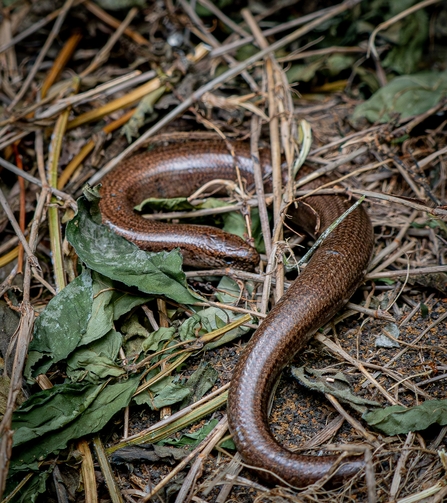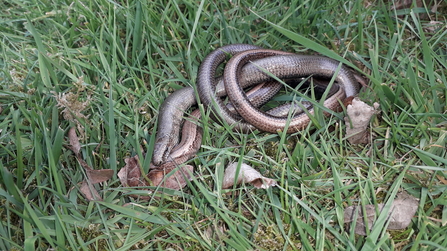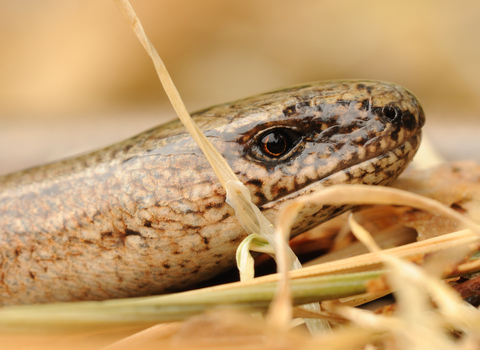One thing we need to get out of the way when talking about slow worms – they’re not worms or, indeed, snakes. Despite their serpentine appearance, they are in fact legless lizards and the only such creature native to Britain!
The way we can tell that they’re actually lizards rather than snakes is the fact they can blink with their eyelids and shed their tails to avoid getting caught by predators. You can also tell them apart from snakes by their size, as they only tend to be around 30-50cms long, and by their lack of a distinct neck, meaning its head and body all look one of the same.
Slow worms like to burrow into loose soil and nose through dense cover or long grasses, which has made the use of legs redundant, however the presence of bony plates - called osteoderms - beneath their smooth scales makes it difficult for them to slither with great speed or ease. Instead, they rely on camouflage or, more usually, the use of cover to protect them from predators and to keep them warm.




